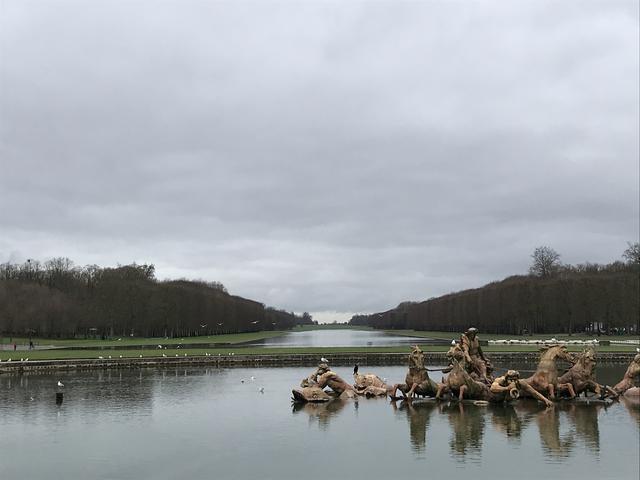The Grand Canal

The Grand Canal of Versailles is a magnificent architectural feat located within the sprawling grounds of the Palace of Versailles. Stretching across the landscape in the shape of a cross, this impressive water feature was constructed between 1667 and 1679 under the direction of the renowned landscape architect, Le Nôtre. Initially met with skepticism by the Royal Academy of Sciences due to the marshy and disease-ridden nature of the land, the Grand Canal has since become a symbol of grandeur and opulence synonymous with the reign of Louis XIV.
The design of the Grand Canal is a testament to the meticulous planning and attention to detail that went into the creation of the Palace of Versailles. The main east-west perspective of the canal aligns perfectly with the axis of the castle, measuring an impressive 1,670 meters in length. The perpendicular branch, running from north to south, consists of two arms leading to iconic destinations within the park - the northern arm extending towards Trianon and the southern arm reaching the Royal Menagerie, which sadly no longer exists. The completion of the Grand Canal in 1679 marked a significant moment in the history of Versailles, as it became a focal point for extravagant royal celebrations and events hosted by Louis XIV.
One of the most enchanting aspects of the Grand Canal is the annual occurrence on September 5th, the birthday of Louis XIV, where the setting sun aligns perfectly with the canal. Legend has it that the sun's rays reflect off the water, creating a mesmerizing spectacle that culminates at the palace's Hall of Mirrors. This natural phenomenon adds an extra layer of magic to the already awe-inspiring surroundings of the Grand Canal, making it a must-see attraction for visitors to Versailles.
During the winter months, the Grand Canal takes on a new role as a frozen wonderland, transforming into an ice rink that attracts skaters and sledders from near and far. This recreational aspect of the canal adds a playful touch to the meticulously manicured gardens of Versailles, providing a unique experience for visitors of all ages. Additionally, the practical function of the Grand Canal as a hydraulic system cannot be overlooked, as it served as a vital component in the distribution of water to the various fountains throughout the park.
One particular area of the Grand Canal known as "Little Venice" holds a special charm, thanks to a gift from the Duke of Venice - four gondolas and their gondoliers. This unexpected addition to the landscape adds a touch of Italian flair to the French gardens, allowing visitors to experience a taste of Venice right in the heart of Versailles. The Grand Canal stands as a testament to the grandeur and ingenuity of the Baroque era, showcasing the harmonious blend of art, architecture, and nature that defines the Palace of Versailles. A visit to this iconic water feature is a journey back in time to the golden age of French royalty, where extravagance and elegance reigned supreme.
© ChatGPT 3.5